Q opens in triumph, Fringe overshadows Festival, Outfit Rise, Rugby, Rugby, Rugby, and the Death of the Theatre. [by James Wenley]
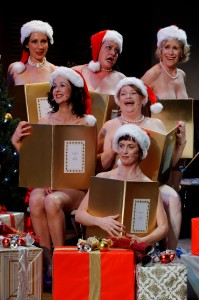
Attending the recent Hackman Theatre awards, Auckland Theatre circa 2011 would appear to be in rude health. Rude being the word, hosts Nic Sampson and Joseph Moore proudly observing it was a record year of nudity on stage, from the very brave Mr. Sam Snedden in The Only Child to the Dame bosoms of the Calendar Girls. It was certainly year that didn’t leave much to the imagination, containing everything from dildos to knitted phalluses, bath tubs to swimming pools.
The Hackmans were a big communal pat on the back for the industry, a brash and bold celebration of a huge year in theatre. As Jennifer Ward-Lealand and Robyn Malcom closed the awards night performing in a Thomas Sainsbury play that he had written under duress that very night, there was a sense that anything and everything was possible.
As a critic moving from Craccum to my own Theatre Scenes blog this year, I’ve welcomed the end-of-year theatre break. Throughout the year, I could often be heard to exclaim: ‘Auckland Theatre: There is too much of you!’. It’s been exhausting going to opening to opening night after night. And immensely rewarding. While containing some duds for sure, my impression of the year is one of great strength and eclectic activity. There was no shortage of things to write about at least. There was always something on. Between fellow blogger Sharu Delilkan and me, we reviewed or previewed 96 different shows, and even that barely scratched the surface.
But 2011 was also a year filled with unique challenges, not least the sheer range of theatre on offer for audiences. Theatre still faced the ongoing ripples of the recession; audiences careful with their entertainment spend.
Shortly before the bi-annual Auckland Fringe and Auckland Arts Festival, the last for Director David Malacari, and chocka full with interesting local and international works, the February 22nd Christchurch Earthquake struck. Confronted by the loss of life and devastating images coming from the city, theatre could understandably be seen as frivolous.
The theatre community immediately got behind the fundraising efforts, as this post detailed. ATC helped raised money for the Court Theatre. Fringe’s Sirens did a special charity performance and Festival’s Ihimaera concert donated all proceeds to the Red Cross. Later, a one night only and sold out production at The Civic of Toa Fraser’s usually two hander Bare was expanded with a cast including recent performers Morgana O’Reilly and Curtis Vowell with Michael Hurst, Keisha Castle Hughes and an astoundingly brilliant and rare stage performance by the man himself, Sam Neil. For those holding tickets, it was a special theatre moment indeed, not only for the unprecedented coming together of talent onstage, but what the coming together represented for Aucklanders wanting to do something for their brothers and sisters in the South.
Of Fringe and Festival
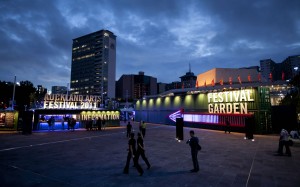
The Auckland Festival soldiered on. The Spiegeltent hosting the crazily cool camp circus freaks Smoke & Mirrors and opening up of the revamped Aoetea Square with the Festival Garden made the area seem alive at night for the first time in many years. Of the internationals, Bolivia’s La Odisea was stunning theatrical and cultural reworking of the Odyssey story. The Vietnamese Water Puppets were a fun experience of a unique performance tradition. Locally, Massive Company impressed with the large scale Havoc in the Garden.
“A powerful work that explores what people can do to each other, both good and bad…. For much of the second half, my stomach was in knots, as each revelation is told. I am so pleased to see such an excellent and confident major new New Zealand work on our stages. Go hard guys!”
The Festival came away with good news – an operating surplus, and a 30% increase in audience numbers from 2009 – but acknowledged the tough environment. “Of course, we would have loved more people to see the amazing range of local and international works that Artistic Director David Malacari programmed for his last Festival; however given the environment that we were in we understood that people wanted to put their discretionary dollar elsewhere.”
With no reflection on the quality of the work itself, some shows played to less than inspiring houses. The Auckland Fringe however, acknowledging the vastly different economies of scale (not to mention the subsidies – government/council versus out of the artist’s pockets!), played to packed houses, especially at its hub at The Basement. This was where the party was really going off.
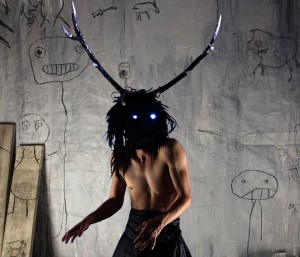
Australian comedies with heart, Alvin Sputnik and Angus, Ecstatic were magic. When Animals Dream of Sheep was a sweeping surreal adventure in Myers Park. Local comedies Joseph and Mahina and Chalk were gold. The Turn of the Screw was genuinely creepy, and Standstill beguiling. Forbidden Broadway, “must-see viewing for any self-respecting Musical Theatre geek” gave us a taste of the long running off-Broadway spoof . Homeless Economics, “revelatory and refreshing”, invited us into the City Mission, the Hobson Street Dama club troupe performing real stories from their own ‘fringe’ experiences. And the water ballet Sirens by the Wet Hot Beauties, the first in Auckland for 50 years (!) was my favourite Fringe experience, completely changing my perception of the art form. ““Can you resist the Sirens call?” the poster asks. I couldn’t. Please take me with you ladies!”
As I wrote at the time, bidding adieu to the Auckland Fringe:
“Edinburgh is of course the granddaddy of Fringe Festivals, but every self-respecting city with a love for the arts has one. It’s hard to believe now that Auckland didn’t even have one till 2009, and this 2011 iteration is only the second. Auckland Fringe is proudly open entry – anyone with a show idea, an agreed venue, and the money for the small bond can enter. The sheer volume of stuff that was on this year, and though budgets weren’t huge, the fact that so much of it was very good quality demonstrates how necessary the Fringe platform is for artists. The talent, and the hunger to tell stories, is out there. “
The Fringe Report boasted that Auckland Fringe 2011 played to an audience of 51,888 people, up 31% on 2009. And then this gem: “The Fringe and related productions involved 1,296 people and created a direct economic impact of $2,707,924.”
Rugby, Rugby, Rugby
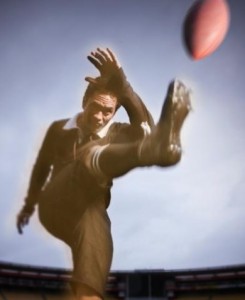
The greatest challenge for Auckland Theatre during the year was the Rugby World Cup. While the cup dominated, theatre did not shut up shop, there certainly was no shortage of it for those that way inclined. Before the cup there were two approaches of play – either an influx of broadminded tourists would bolster our theatre numbers, or everyone would stay home and watch the Rugby. Surprise, surprise, Rugby heads cared for only one thing.
There was no shortage of plays ready to cash into the World Cup fever in a ‘if you can’t beat em, join em’ spirit, as I found in this blog post, from the tenuously related murderous All Blacks cheerleading team in Death by Cheerleader, to The First Asian AB, to Finding Murdoch, to Jarod Rawiri’s artful solo performance of Invincibles legend George Nepia in I, George Nepia. Theatre Scenes even asked which All BLACK would you like to see perform in a theatre show?. However, as NZ Herald’s Janet McAllister observed in her review of the year “2011: the year that rugby plays outnumbered rugby players, yet play on the field had more depth than any words onstage about the game.”
Basement Fest went for alternate programming, with Albert Belz’s Jack the Ripper tale Yours Truly provided inspiration to arts types about how to deal to the rampant Rugby fans.
Two musicals at The Civic, Peach Theatre Company’s The Wizard of Oz and Auckland Music Theatre’s Anything Goes, valiantly tried to coax Aucklanders away from the Rugby, at least for a night. Michele Hewitson, in her interview with Jesse Peach revealed “his future as a director goes depends on whether the Wizard makes $100 or loses $100.”
But the World Cup was a once in a lifetime event for the city and the country, and there really was no other show in town. Playmarket’s Murray Lynch bluntly reporting “It is a shame to dampen the palpable joy of the Rugby World Cup but the fact is there was a negative impact on attendance for theatre during the period. With such fever in the country why would anyone attend a theatre show on the night of a game?… It is difficult to rejoice when we hear commentators acclaim the success of the Real NZ Festival. It was predictable to some that theatre would not gain particular benefit from attendance by overseas guests.”
So yes, the World Cup swamped all. But for those who got amongst it, the spirit and those final minutes proved some of the finest and gut-wrenching theatre of the year.
Arty Farty
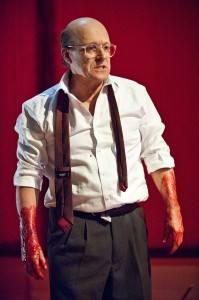
Perhaps as karmic apology, arts types were gifted three plays that dealt intelligently and engrossingly about art and artists. Michael Hurst was first in Auckland Theatre Company’s RED, shaving off his hair to play Mark Rothko. Rothko’s big canvases dwarfed the Maidment stage, and the play dealt with some even bigger esoteric themes in an accessible and even entertaining way:
“In some ways this is an Art History debate disguised as a play. The initial scenes play as a platform for Rothko’s wit and ideas, as he lectures to his new assistant. Many heady concepts are explored – the death of cubism by Rothko and his contemporaries, the Renaissance revolution of linear perspective, Nietzsche and the dichotomy of Apollo Intellect and Dionysus emotion. It’s Art History 101, and I felt smarter for the experience. Director Driver helps keeps the insights moving and flowing, and to its great credit, it’s never ever boring. It’s not till later when the lecture is done that it starts to get really interesting, Ken confident enough now to challenge his master; the play becomes not just a conflict of ideas about what art should be, and who it should be for, but a thrilling conflict between two men. Both actors are at their best in the fiery, passionate outbursts.”
His wife Jennifer Ward-Lealand then got her chance to play with the paints as NZ icon Rita Angus in Rita and Douglas, Dave Armstrong adapting the artist’s letters to one time lover Douglas Lilburn for the stage. The Pitmen Painters finished this theme with UK Lee Hall’s canvassing similar themes to Logan in RED.
Auckland and Silo
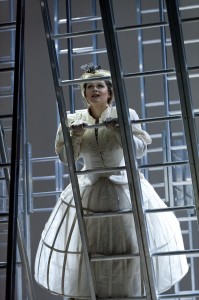
Auckland’s premiere theatre companies, Auckland Theatre Company and Silo Theatre had their share of triumphs and disappointments. Despite a worthy attempt, ATC’s production of Poor Boy, with a score by Tim Finn, couldn’t shake the scriptural flaws of the work. Mary Stuart featured powerhouse performance by regal leads Robyn Malcolm and Elizabeth Hawthorne, The Twits was fabulous (and naughty) family fun, RED dripped with colour, and Sharu reported that in Calendar Girls “titillation abounds”. Their New Zealand work was particularity successful; Well Hung a timely revival of Robert Lord’s thinking man’s farce, and The End of the Golden Weather continuing their Bruce Mason renaissance. And in On the Upside-Down of the World, Arthur Meek rescued a remarkable story from our past. It contained all the ingredients for a moving theatrical piece; adventure, tragedy, humour, the discovery and clash when two very different cultures meet, and insights into the making of our nation together. Laurel Devenie was born to play Lady Ann (and I’m not meaning her theatrical stock), conveying the right amount of pluck, heart and warmth to fully embody the character.
Silo Theatre managed to overcome their big misstep from the beginning of the year, Did I Believe it?, to present a risky and inspiring season of shows. Whether it was the Look around You plagiarism controversy (Silo’s PR team working overtime), the stench of overt corporate promotion, or its dubious entertainment value (critics, including me were less than kind, but audiences apparently drunk it up), it just didn’t go down. As it was, for Silo it was an added and unexpected bonus to their already planned season. Starting relatively late in the year – May – with The Brothers Size, Silo were back on top form.
“The Brothers Size must have presented director Shane Bosher and his creative team something of a dream project to work on. In the best tradition of Peter Brook’s ‘The Empty Space’ treatise, the action takes place on a bare oil-stained raised stage (the audience surround it on two sides), the only prop a bucket of water that is used to cleanse and wash away dirt (and sin?) through the play. All the rest is imagined through the force of McCraney’s words and the equal force of the three actor’s physicalities.”
I Love you bro and The Only Child followed, respectively a disturbing story of the internet age, and an old Ibsen done anew, proving must sees. Their Tartuffe, the “biggest and brashest Silo Production in a long time”, kicked holy ass, and without a doubt, was the most fun theatre experience of the year.
For Auckland Theatre Company, their most satisfying work was not to be found in their mainbill productions. The third year of Young and Hungry in Auckland (and last, for now) was especially rewarding with the surreal Cow and blood splatter of Disorder. But Tigerplay, with a script by Gary Henderson from the 90s, still rates as a raw, intimate and fresh story from an exceptionally talented company of youth.
The Wasteland, the debut performance from their Participate program is the most exciting development from the company. Director Michael Hurst and his company of 34 65+ year olds was a “profound theatrical event”.
Musicals, Independents, Actors, oh my!
It was a depressingly light year for big musicals, so much so that I was forced to travel to NEW YORK to get my fix! Pro-Amateur productions of Miss Saigon and Anything Goes, together with Peach’s Wizard of Oz filled the void.
Ensemble go-getters the Outfit Theatre Company seduced their way firmly onto audience radars with The Sex Show, following with a strong season of Boys’ Life, King Arthur, Love After Dark and their sold out seasonal farce A Criminal Christmas. They’ve established themselves firmly on the scene, and as a company that is going places.
Fellow independents Catalyst Theatre Company presented a season at the Musgrove. I recognised a hint of Roger Hall in OE disaster story Flightless Birds, and while I couldn’t get to Heroes or Making a Killing, the word from those was glowing.
There was many a bravura acting moment throughout the year. Pua Magasiva in Brothers Size, Michael Hurst in RED, Stephen Lovett in Only Child, Laurel Devenie in Upside Down of the World, Jennifer Ward-Lealand in Rita and Douglas and Jarod Rawiri in Nepia. The year was perhaps won by newcomer wonderkid Tim Carlsen (I told you he’d be one to watch), who in a series of bravura performances in One Day Moko, I love you Bro, End of the Golden Weather and Tartuffe earned the jealousy of Hackman hosts Sampson and Moore, complaining (in song) that he had stolen all the ‘white men’ roles.
Venues for Africa
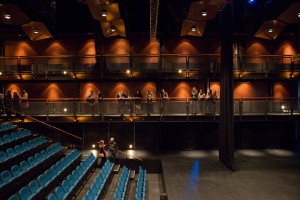
2011 shall of course go down in history as the year that the Q theatre space opened, after many years of graft from the theatre community (read Sharu’s interview with Executive Producer James Wilson). The debut shows were Raising the Titanics and Venus Is… and its two spaces Rangitira (main theatre) and The Loft were host to a number of memorable productions. Soon, Q’s novelty turned to disbelief that we had gone so long without it, as it quickly became and essential fixture of the theatre precinct and Auckland’s theatrical life.
On any given night, Aucklanders could go to shows on at Q, The Civic, The Town Hall, The Maidment Theatre complex, and The Basement. And that’s just in the central city. TAPAC (By the Zoo, don’t you know?) played host to shows like The Bone Feeder. Pumphouse had shows like Gavin puts things straight.
And the other new theatre, the Mangere Arts Centre held treats like the first full length NZ Tongan play The Kingdom of Lote, PIPA and ATC’s Pollyhood in Mumuland and the brilliant new Pacific Musical The Factory.
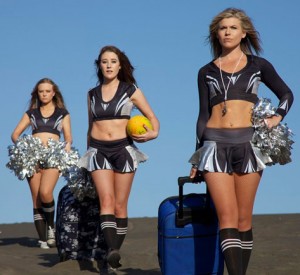
The Basement continued to host gutsy up and comers (and Tom Sainsbury) from all walks of performance. Highlights include comedies Death by Cheerleader and Dan is Dead / I am a Yeti, dramedy These are the Skeletons of Us, screwball Glorious, the absurd I won’t be happy until I won’t be happy until I lose one of my limbs, and physical theatre piece The Keepers.
If Aucklanders seem spoilt for choice in their venues now, there’s promise of even more to come. Auckland Theatre Company got approval for their new waterfront theatre. At the beginning of the year began a movement to reclaim the historic Mercury Theatre as a venue, with the theatre tantalising and briefly staging some shows during the Auckland Arts Festival. The St James has not been forgotten either, and Auckland Mayor Len Brown continues to talk up restoring the theatre and the prospects of Auckland as a world class city with a thriving theatre industry.
The ‘T-Word’
In a year when theatre of all kinds was in abundance, it’s interesting to note that the year also marked the quiet death of the theatre itself. Or at least from a marketing point of view. For months leading up to its opening, all we ever heard about was Q Theatre, Q Theatre, Q Theatre. Then, soon after opening, they decreed they were dropping Theatre and henceforth known just as Q. The thinking was that they didn’t want to be pigeon-holed as a ‘theatre’ space. When Silo Theatre recently launched their 2012 season, Shane Bosher also announced that they too were dropping the ‘T-Word’ and becoming simply Silo. Bosher’s explanation was this was audience driven, the name most in use.
We’ll be joining the trend too. Next year, you’ll be reading Scenes.co.nz
Suppression of ‘theatre’ bothers me, as if it’s embarrassing, old-fashioned, limited. If anything, theatre this year has shown how diverse, unlimited, and of the moment it can be. As it confidently continues, survives and even thrives at the bottom of the world in the early part of the 21st Century, it is name we should be proud of – displayed in bright lights, not hidden away. Yes, Auckland has THEATRE, and we should celebrate.
And celebrate we did at The Hackman awards, many joke awards given out to mark the year (find the list of winners here). Proceedings got serious for a moment when Roger Hall was awarded the Lifetime achievement award. He talked of his experiences in the changing industry, and movingly noted that this was the first award recognition he had received from within the theatre industry. A standing ovation followed his speech; there is much credit owed. His plays Glide Time and Middle Aged Spread, “completely altered the place of New Zealand play” (John Thomson, New Zealand Drama). Plays from, and about New Zealand, for the first time, could be considered pleasurable and profitable.
Reflecting today, it’s remarkable to note the commonplace abundance of New Zealand work performed this year. And how damn good it is. Local works including On the Upside Down of the World, Awhi Tapu, I, George Nepia, A Thousand Hills, Tigerplay and Rita and Douglas were some of the best of the year.
I began Theatre Scenes with the question Why Theatre? Why Now?. I hope that Theatre Scenes has been a useful addition to the scene and conversation. And we hope that the blog, and this year in theatre, has gone some way to answering this question.

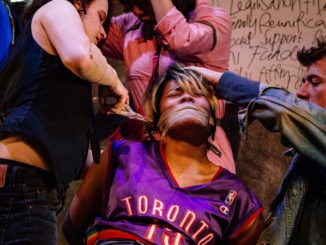
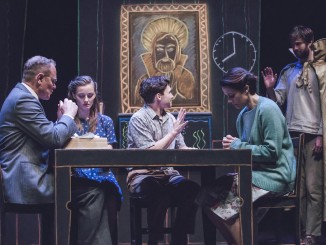
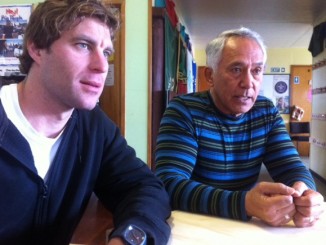
Leave a Reply